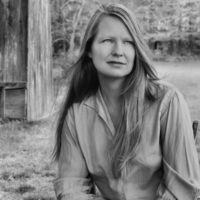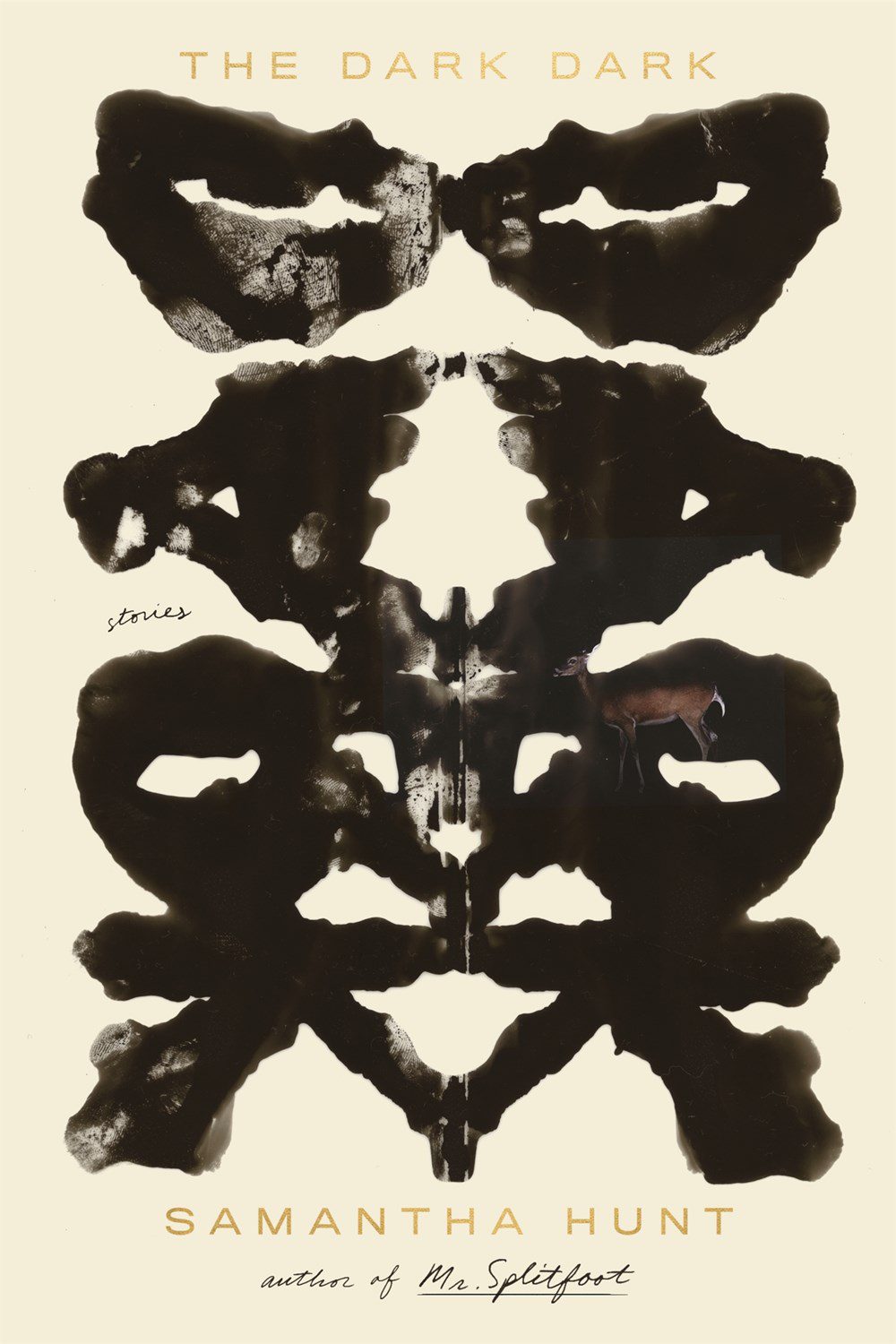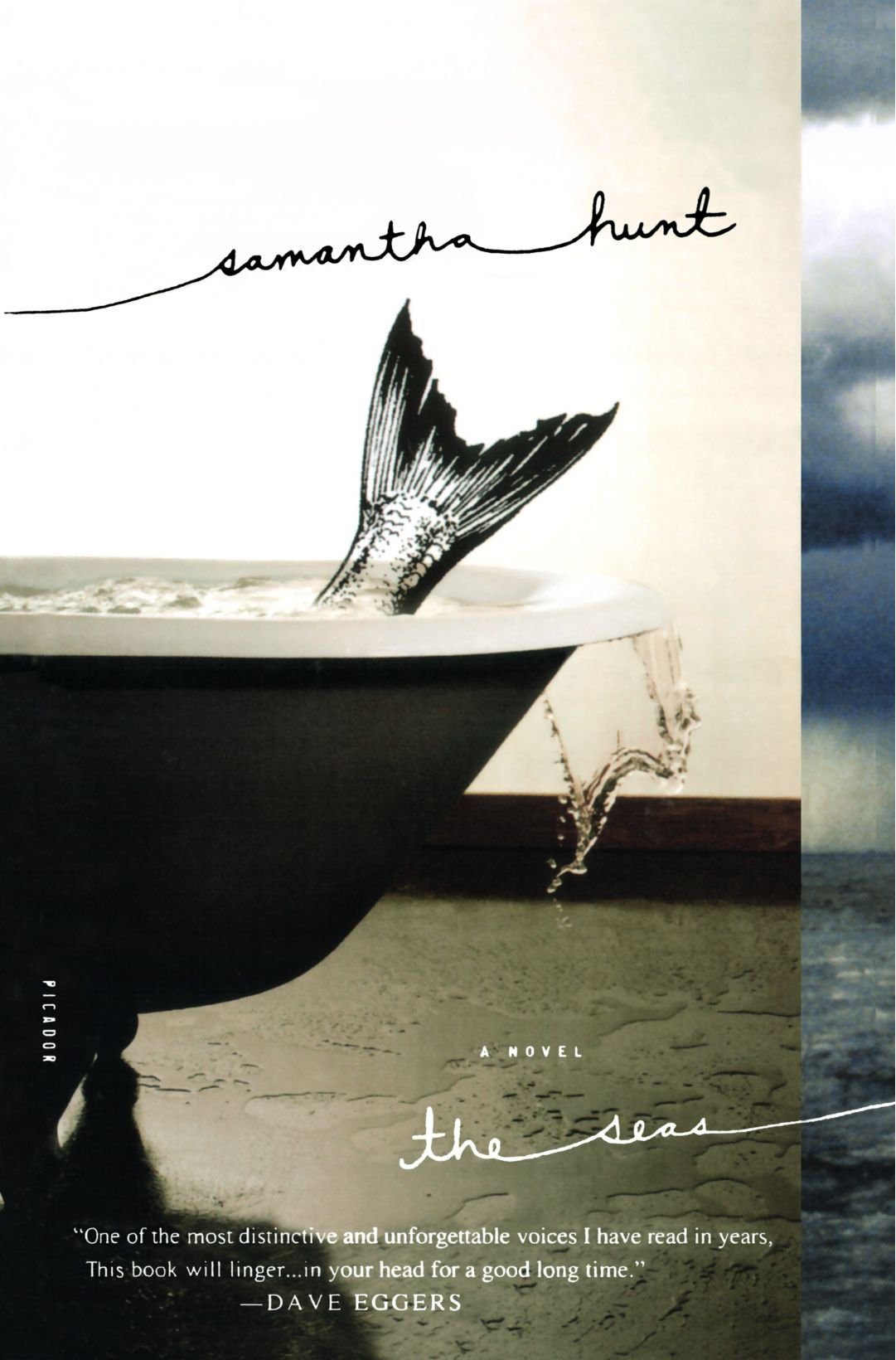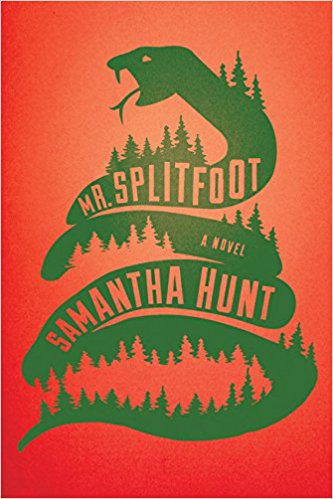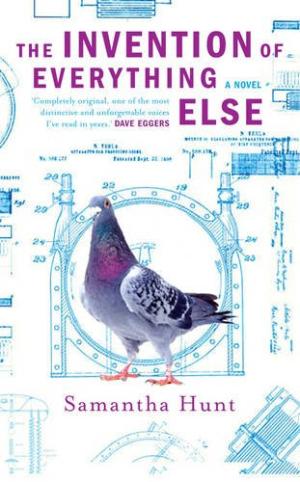Samantha Hunt has written three novels: The Seas, the tale of a woman who may be a mermaid; The Invention of Everything Else, in which a young hotel maid befriends Nikola Tesla; and Mr. Splitfoot, one of the best novels I’ve read in the past few years, one I won’t ruin by further explanation. When the New Yorker published Hunt’s “A Love Story” in May, every writer I know mentioned it to me. This is a representative snippet:
I used to think it was motherhood that loosens a woman’s grasp on sanity. Now I see it is the surplus and affluence of America. Plus something else, something toxic, leaking poison, fear. Something we can’t yet see. But not motherhood itself.
That story, and nine others, appears in Hunt’s new collection, The Dark Dark. It is a remarkable book from a writer of immense talent.
I interviewed Hunt via email, imagining, I suppose, a long correspondence while we dug into the tough questions about art and life. Silly me. Her one email to me was so characteristically smart and so beautifully written, there was nothing more to say.
***
The Rumpus: Do the stories in The Dark Dark predate your three novels, or have you been writing both forms the past few years?
Samantha Hunt: The oldest stories here are “Cortés the Killer” and “Love Machine,” both from 2006, two years after my first novel. I considered including some even older stories—ones I wrote before The Seas for McSweeney’s and Small Beer Press, stories about the imagined lives of real men: John Glenn, Neil Armstrong, Buzz Aldrin, and Stephen Hawking—but these pieces are decidedly not The Dark Dark (despite their connection to science and their address to gender and power.) They are their own separate thing. When I was younger, I used to hand-make books and I collected all these Lives of Famous Men stories in an illustrated edition of twenty-six pieces called “Manual.” I’d like to find time again for slow, handmade projects. Soon as we destroy the Internet, right?
I am a toggler. I always have three or four projects going, short stories alongside novels and essays. When one project is terrible, there’s somewhere else hopeful to look. The stories are very different from writing novels. They are a survey of the past decade’s obsessions. The Dark Dark is also a far slower project, clearly, and that’s a relief. I look for slowness anywhere I can find it.
Rumpus: Do you consider the practice of writing the same regardless of the form in which you’re working?
Hunt: My father thought a novel was a broken short story. There’s something to that. Many of my favorite novels are novellas. The authors of brief things must reckon with the precision of language.
I became a writer because I am the youngest of six children. I listen; I observe. I’m camouflaged as a moth. Mothers are unseen. It helps me write.
In writing I found a way to make silence and to be silent. The short story has a lot more silence than the novel and that is its success. When I consider the gargantuan monsters the 21st century has made (McMansions, SUVs, bottomless appetites for consumption) I’ll take the strength and beauty and kindness of the miniature any day, everyday. Dollhouses. Frances Glessner Lee. Kathy Osborn.
Rumpus: To find themes, we look for repetition. Here’s what I found in The Dark Dark: the relationships between adult siblings, going outside at night, the band Journey, the color yellow, blue collar work/unemployment, the idea of the American landscape transforming from farmland to sprawl, Lyme disease. Have you ever read that the horse statue in The Brady Bunch was used in all these other television shows? That’s what I think of, when a writer does this; it’s not that there’s any meaning in the statue of a horse, but its reappearance makes you want to ascribe some to it. You yourself write in one of these stories: What does a deer mean?
Hunt: Exactly. And let me say, to find all of these obsessions collected here so obviously was a surprise to me. I live with deer and coyotes. Lyme ticks are a daily concern and mystery, but, yes, what do they mean? I don’t know yet. But I’d rather point out the abundance of mystery than pretend to solve it. As if I could solve it! What does a deer mean? Who knows? Everything!
One night as I girl I spied my grandma and one of her sisters outside, holding hands and singing, “Sprites of the night are we, are we. Singing and dancing joyfully.” It was witchy and wonderful because it meant there was power in joy. They were not afraid of the night because they were giggling. I am very interested in finding the surprising boundaries, for instance, where do joy and fear meet? Film maker Andi Olsen has a wonderful short film called Where the Smiling Ends. She waited at the Trevi Fountain in Rome and filmed the tourists only at the moment after their photos had been snapped, the moment their smiles dissolved. It’s genius and heartbreaking. I think about her film when I explore the places the strips malls meet the wild world they are eating up. But rather then “Where the Smiling Ends,” it’s “Where the Mystery Ends” or “Where the Darkness Disappears.” I like the night. I like a slight terror to remind me how precious life is. Last night I was sleeping with my smallest child and there were crazy coyotes howling outside. I knew how lucky I was to have her near me.
The Brady Bunch horse is a writer’s game and one I really enjoy, planting totems for close readers. I do that all the time in my writing, hide small references (back to the dollhouses) to something personal—my siblings’ names or a street in my hometown. Or else I plant little treasures for scavengers to collect. Or I plant things that have very little relevance in my life, i.e., the band Journey (except that my friend Meghan really did go on a date with Steve Perry!). One book that has meant much to my writing is W.G. Sebald’s The Emigrants. He uses a photograph of Nabokov hunting butterflies in a similar way. The image or a reference to the image is traced throughout the four separate narratives. It sometimes seems to be the only link between the pieces, while the symbol Nabokov cuts remains wide open, a pencil sketch, a mystery to interpret outside his role as emigrant/observer.
Rumpus: There’s one element not listed above, and that’s pregnancy and motherhood. Perhaps it’s my shortcoming, but I think we have one dominant contemporary idea about the “motherhood” book, and your work pushes against that.
Hunt: Discourse about motherhood is chillingly narrow-minded. It’s a tool the patriarchy uses, of course. So people complain about their kids or they complain about the pain of birth or they make motherhood kitschy, Mother’s Day-y. Much of the writing I do about the female body is to remind women, myself included, that they make life and they make death. That strikes me as a far more powerful stance than the weak lies told about mothering (dinner, discipline, worry, etc.). There is nothing more important to our survival, nothing more dignified than learning how to take care of others, how to serve and teach people with kindness and openness. Mothers are experts in these fields. I hope people can learn to listen to them, learn to be like them and acknowledge the wisdom there before it is too late. I hope people can learn how to serve others.
I think I write mostly about death and so it is interesting to hear how often people think I’m writing about pregnancy and birth. Though of course they are two sides of the same coin. Both when I was pregnant and now as a mother, I am consumed with thoughts of death. This is a strange role in parenting. The death guardian. Ugh. I hate worrying and so I try to turn it into something else. The first time I took my daughters to the ocean—and I love the ocean but where we swim is very rough, very New England, rip tide, not messing around ocean—and a thought arrived: I was asking my daughters to slowly recognize death, just dip their toes in its fathomless edge, to know it is there, even in the night when we don’t see it and that it, in its mystery and largeness, in its terror, is the thing that makes life precious, magnificent and full of never-ending curiosity.
Rumpus: It’s painful to do so, but how would you fill in the blank in “If you like _____, you’ll love Samantha Hunt”? (I described Mr. Splitfoot as “Joy Williams and Katherine Dunn collaborate on a rewrite of Housekeeping.”) Who are your influences?
Hunt: I’ve heard people relate me to Dunn before which is funny because I haven’t read her yet. Housekeeping was important to me as a young reader. Talk about silence! Then there’s a list of authors that my work is really nothing like at all, but I draw upon them as influences just the same. Haruki Murakami, Kelly Link, and Sebald who I already mentioned. Faulkner’s As I Lay Dying is very important to me as an influence. When I didn’t know how to start Mr. Splitfoot, I just wrote the first line of As I Lay Dying instead and then continued on. It’s dissolved in the text now, but it helped me start.
I am very bad at remembering the books I’ve read and so recently I had a wonderful experience. I decided I wanted to teach Toni Morrison’s The Bluest Eye. I hadn’t read it in twenty-five years. I was surprised to find how much I drew from that book. Stole from that book, learned from that book about writing. I had forgotten and there it was. Morrison has called that text faulted. I cannot see how.
One last important influence I’ll mention is Flannery O’Connor. In high school I shoplifted her Complete Stories. Having read “Good Country People” for class, I really just felt a home in her work. I had little guilt about the theft at the time. I sucked in my stomach and shoved the book into my pants. It’s very big. I can still feel how it cut into my body in the most exciting way. Clearly, I don’t feel guilt-free about this crime anymore—I wouldn’t be mentioning here, looking for some absolution if I did. Especially since FSG, O’Connor’s publisher is now my publisher! I guess I owe them some money. But that feeling of coming to O’Connor and just knowing it, felt like a home.
Rumpus: Let’s talk about process, which can be deathly boring and dumb I realize but I selfishly want to know. One of the things I found so striking about your work from the outset is the sentences; the work has a particular (I almost said peculiar) sound to it. Do you write toward a particular sound, do you reach toward a particular voice, and what does that entail?
Hunt: There’s a voice when I write. I speak everything aloud. My family is so accustomed to me talking to myself that often times they don’t answer me when I am trying to speak to one of them.
The lion’s share of my work is revision, 85%? I revise forever, combing over lines, listening and listening to them in different hours and moods so that I feel they are finally right for me. There’s definitely a voice and I always speak my work aloud. I have a lot of old people in my head, most of them dead now, but I always hear how they would say things, my grandparents and my neighbors. Slacks. Pocketbooks. Slicker. I hear oddball words. When I was learning to write I was surrounded by poets; Brian Blanchfield and Annie Guthrie were always with me as I was learning. I’m so grateful for the poets in my life. Because of them I always knew the importance of each word, line.
Rumpus: This collection is bracketed by two stories that are echoes of one another, indeed, almost versions of one another: “The Story Of” and “The Story of Of.” Explain yourself!
Hunt: The truth of this story goes back to what I said about revisions. I wrote near thirty drafts and I liked it both as a straight-up tale of infertility and a wild ride through genetic disturbances. “The Story of Of,” the regenerating story complete with genetic mutations, was actually one of the first drafts. “The Story Of,” the more straight up piece about infertility came later, like smoothing out a wild table cloth. But I have never been an either/or sort of human, and I was reluctant to present a picture of order or tidiness. I am a both. I am interested in messes. What great satisfaction when I realized I could include two versions of the same story and that including two version would make my point even stronger. So, what is my point, my intention? By using ideas of reproduction vs. duplication, I want these stories to be virulent stances against the narrowing capitalism wreaks, the poverty when options and choices become limited. I hope these two stories tear down the hateful idea of “normal.”
Rumpus: The Dark Dark is an intense title, and the stories offer plenty of intensity, but there’s also humor and light and love (and sex!). Do you think “darkness” reflects who you are and what you think as an artist—and is that distinct from who you are and what you think as a person? I wonder often about the strange way in which being a writer is akin to being a performer; I wonder whether there are writers who feel that the self on the page is the self in their daily life.
Hunt: The Dark Dark is many things to me, but never a negative place. Indeed, it is so full, it is nothing but positive. The darkness is free, quiet, nurturing, strong (and in that strength scary as a mama grizzly bear), restful, honest, wise, strange, funny, multiple, paradoxical, sublime, ripe with possibility and terror. The dark is the realm of the interior, the tiniest space that births galaxies.
As a teenager and into my early twenties I lived in a geodesic dome on a mountain. No running water, no phone, real rustic. I loved it. One night, there by myself, I was terrified. I was up in the loft trying to sleep but I couldn’t because I was so scared to be that alone. I knew I’d never lose my fear if I didn’t address it so I went outside in my undies and waited for the darkness to come and kill me. But it didn’t. It was beautiful and calm and even kind. I went back to bed eventually.
I am surprisingly optimistic, though lately that’s been hard to maintain. Art and slow, small, close gestures help remind me of my optimism. I can’t resist saying this because it comes from the band The Darkness, but, I believe in a thing called love.
As a writer I feel more like a filter than a performer. I absorb and observe and then I name scatterings of stars into constellations. I don’t usually spend time asking whether the stars are random or planned. I make a narrative in the darkness, the area subscribed by an outline of bright points. Sometimes they look like Ursa Minor, and sometimes they just looks like one day the world exploded.
***
Author photograph © Marion Ettlinger.
